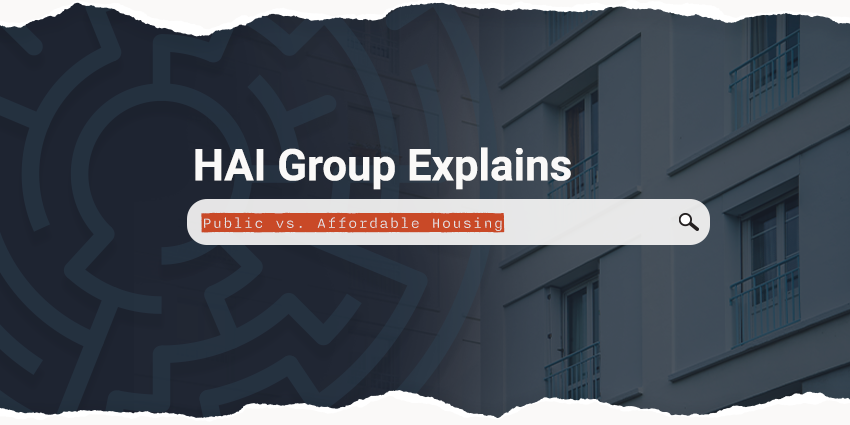As the need for commercial insurance grows, so do the opportunities for agencies searching for new clients. In a market as broad and fragmented as commercial insurance, it takes a specialized approach to build and maintain a successful book of business.
Commercial insurance is expected to exhibit significant growth through 2028 due in part to an increasing number of small- and medium-sized enterprises that need coverage, according to a market analysis conducted by IMARC Group. An increase in commercial insurance providers has helped propel market growth. Businesses also face a growing need to protect themselves against the financial impact of natural disasters, cyberattacks, and a legal landscape plagued by social inflation.
Businesses are looking to partner with insurance professionals that understand their pain points and individual needs, explained Nathan Tripler, a senior business development consultant at HAI Group.
"Casting too wide of a net in commercial insurance can diminish your agency's value proposition to customers," Tripler added. "Agents can achieve smart, measurable, and sustainable growth by focusing on a specific sub-market and client type."
There are plenty of commercial markets to specialize in, but which is right for your agency? In this article, we’ll make a case for growing with the multifamily affordable housing category, a segment of the commercial habitational market.
Introducing the multifamily affordable housing market
Before we delve into the unique opportunity the multifamily affordable housing market presents for agents and brokers to drive growth, it’s essential to understand how affordable housing differs from public housing.
-
Public housing is governed by the U.S. Department of Housing and Urban Development (HUD). As a result, public housing providers must comply with HUD rules and requirements. Eligibility for public housing is determined based on family or individual annual gross income. Public housing authorities, which own and manage housing units, establish income limits based on HUD's guidelines.
-
Multifamily affordable housing isn’t directly tied to HUD and generally operates within the for-profit private sector (there are non-profit exceptions). Affordable housing eligibility varies by locality, but generally, a family’s income may not exceed 50 percent of the median income for the county or metropolitan area where the family chooses to live. Affordable housing residents generally pay no more than 30 percent of their monthly household income for rent and utilities. Eligible individuals or families are issued a voucher through the Housing Choice Voucher program, and it is up to them to find a private property that accepts the voucher. Multifamily property owners and developers can reserve affordable housing units for voucher holders through participation in the Low-Income Housing Tax Credit Program (LIHTC), which offers federal income tax credits to incentivize private investors and developers to acquire, rehabilitate, and build rental housing targeted at lower-income households.
Seizing on the increasing demand for affordable housing
The multifamily affordable housing market presents ample opportunities primarily due to the increasing demand for affordable housing, a need unlikely to diminish anytime soon, said Camron Rafiee, assistant director of underwriting at HAI Group, an insurance carrier serving public and affordable housing nationwide.
“And with that, there’s a need for someone to specialize in this type of risk and have the ability to place coverage,” Rafiee said. “Everyone needs a place to live, and the market can only harden so much.”
A National Multifamily Housing Council report released last summer indicates that the U.S. needs 4.3 million more apartment units by 2035 to meet the demand for rental housing—with Texas, Florida, and California accounting for most of the demand. A 2023 report from the National Low-Income Housing Coalition reported a shortage of 7.3 million affordable rental units in the country.
The widespread need for affordable housing allows for agency marketing opportunities in nearly any location. As one might expect, high-growth regions need more affordable housing. Between 2014 and 2019, the most populous states experienced the highest growth in new LIHTC-assisted affordable units, according to Kelly McElwain, research and industry intelligence manager at the Public and Affordable Housing Research Corporation. While recent data is not yet available due to LIHTC data lags, Washington stands out by placing the most new LIHTC-assisted affordable units into service relative to the number of families in need, adding 42 new units for every 1,000 renter households below 50 percent of the area median income, McElwain said.
Top 10 States with New LIHTC-Assisted Affordable Units Placed in Service: 2014-2019
|
State |
LIHTC-Assisted Affordable Units Placed in Service (2014-2019) |
| TX |
36,390 |
|
NY |
33,173 |
|
CA |
26,827 |
|
WA |
17,657 |
|
FL |
16,189 |
|
NC |
14,995 |
|
CO |
10,441 |
|
MN |
9,500 |
|
VA |
8,469 |
|
GA |
8,388 |
PAHRC tabulation of NHPD, retrieved January 2023. Note: The number of LIHTC units placed in service between 2015-2019 may be underestimated due to data lags or missing placed-in-service dates.
McElwain noted that most affordable housing investments tend to be concentrated in cities with large populations of families in need. Affordable housing growth is largely funded by the federal government in the form of grants to state and local affordable housing funds.
“There are some new programs rolling out that could expand the toolbox to build and preserve affordable housing, including the Inflation Reduction Act, which created numerous energy efficiency and climate resiliency programs, providing $25 billion that is directly targeted or can be used by affordable housing providers to advance these goals,” McElwain said.
An emphasis on research and relationship building
So, how do you start growing with the multifamily affordable housing industry? McElwain suggested researching your marketing efforts using the National Housing Preservation Database (NHPD). Agents and brokers can use the database to:
- Locate and quantify the amount of affordable housing in target markets
- Identify the funding characteristics of affordable properties
- Identify which regulations apply to a property by studying the subsidies awarded to housing providers
Agents interested in growing with the market should learn as much as possible to remain competitive and provide the best level of service to clients, Tripler said.
“Look into the LIHTC certification and other training opportunities specifically designed for affordable housing,” he said. “Learn the ins and outs of the affordable housing business. When you’re in front of a client, your chances of success increase when you show you know what you’re talking about.”
This includes learning about insurance pain points in the industry, including a higher frequency of catastrophic weather events.
“Catastrophic events are increasing insurance costs, making it harder for developers to close affordable housing deals,” McElwain said.
There’s also a perception problem when it comes to affordable housing. Local zoning restrictions can increase the cost of developing affordable housing, hindering development in these areas.
Despite the opportunities and challenges related to multifamily affordable housing, success in the market ultimately hinges on an agent's ability to build relationships.
"You need to build relationships with clients and carriers," Rafiee said. "The price tag isn't the only factor when finding the right carrier for your clients. You should strive to work with reliable carriers who won't leave the market at a moment's notice, despite the challenges. And you want carriers with a risk management mindset that focuses on predicting and preventing instead of waiting for things to happen. Work with carriers who can act on your client's best behalf."
A singular focus on the multifamily affordable housing market
HAI Group has been creating insurance programs for the affordable housing industry for more than three decades, underwritten by Housing Enterprise Insurance Company, Inc., (HEIC), an admitted carrier rated “A” by AM Best. Tripler said HAI Group's programs include comprehensive property and casualty coverage designed for for-profit and nonprofit providers of affordable housing, mixed-income housing, and tax-credit-financed housing.
Underwritten by Housing Enterprise Insurance Company, Inc., (HEIC), an admitted carrier rated “A” by AM Best, our programs include comprehensive property and casualty coverage designed for for-profit and nonprofit providers of affordable housing, mixed-income housing, and tax-credit-financed housing.
"We offer 24-hour in-house claims services, specialized risk management consulting, in-depth industry research and support tools, and much more," Tripler said. "Affordable housing is our sole focus, so we also understand the unique challenges your affordable housing clients face and tailor our products to address them."
Download HAI Group's Agent and Broker Kit to learn more about our affordable housing insurance programs.
Interested in learning more about the coverage solutions we offer? Connect with a member of our Account Services team.
This article is for general information only. HAI Group® makes no representation or warranty about the accuracy or applicability of this information for any particular use or circumstance. Your use of this information is at your own discretion and risk. HAI Group® and any author or contributor identified herein assume no responsibility for your use of this information. You should consult with your attorney or subject matter advisor before adopting any risk management strategy or policy.
HAI Group® is a marketing name used to refer to insurers, a producer, and related service providers affiliated through a common mission, management, and governance. Property-casualty insurance and related services are written or provided by Housing Authority Property Insurance, A Mutual Company; Housing Enterprise Insurance Company, Inc.; Housing Specialty Insurance Company, Inc.; Housing Investment Group, Inc.; and Housing Insurance Services (DBA Housing Insurance Agency Services in NY and MI).








